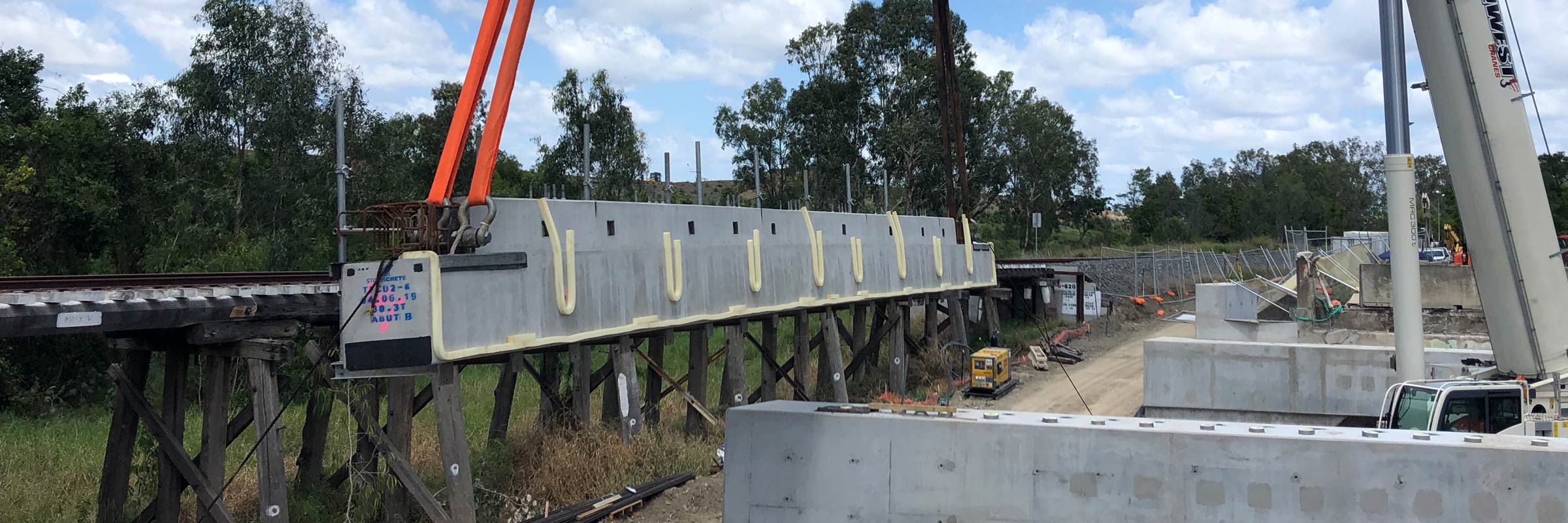
One of the key shortcomings identified was the existing road bridge over Frenchmans Creek, which did not have adequate structural capacity to facilitate continued Type 1 Road Train access along the route into the future. It was determined that replacement of the bridge would be required.
SMEC was commissioned by TMR as the lead consultant to deliver the preliminary and detailed design of the replacement of Frenchmans Creek Bridge, with demolition and construction works to be undertaken in a single 60-hour window over two-stages. This was then revised, as TMR decided to extend the closure to 80-hours to complete the entire bridge replacement in one stage rather than two and accommodate additional works.
Community need drives innovation
There were significant constraints for the project including:
- no suitable diversion route and
- inadequate space on the highly constrained site to facilitate a temporary side-track during construction.
“These constraints meant that the bridge could not be replaced using standard demolition and construction methodology without closing the road for several months. Being a key transport route, this was not a viable option as it would significantly impact the supply chain of essential food items.
SMEC presented a proposal to replace the road bridge within a short 80-hour road closure period. This would be supported by three innovative solutions:
- a one-of-a-kind deck unit,
- fast curing grout systems in line with the latest technologies and
- a bespoke mix design developed to respond to site constraints.
The solution was well received by TMR as the option resolved all the physical constraints on the project.
Precast sections
To deliver a design which met the requirements of the brief, the design team made use of precast elements wherever possible, researched and specified a range of suitable specialised fast-curing grout products for individual applications and adopted design details that facilitated easy, rapid and low-risk installation.
The geometry of the bridge was governed by the need to allow construction of most of the bridge elements – including the foundations, substructure and a section of the bridge deck – prior to the road closure in order to minimise the number of construction activities needing to be undertaken within this window. An innovative one-of-a-kind triple hollow deck unit for road bridges was designed to minimise the number of lifting operations, in order to limit traffic control disruptions during online construction and to optimise time during the road closure window.
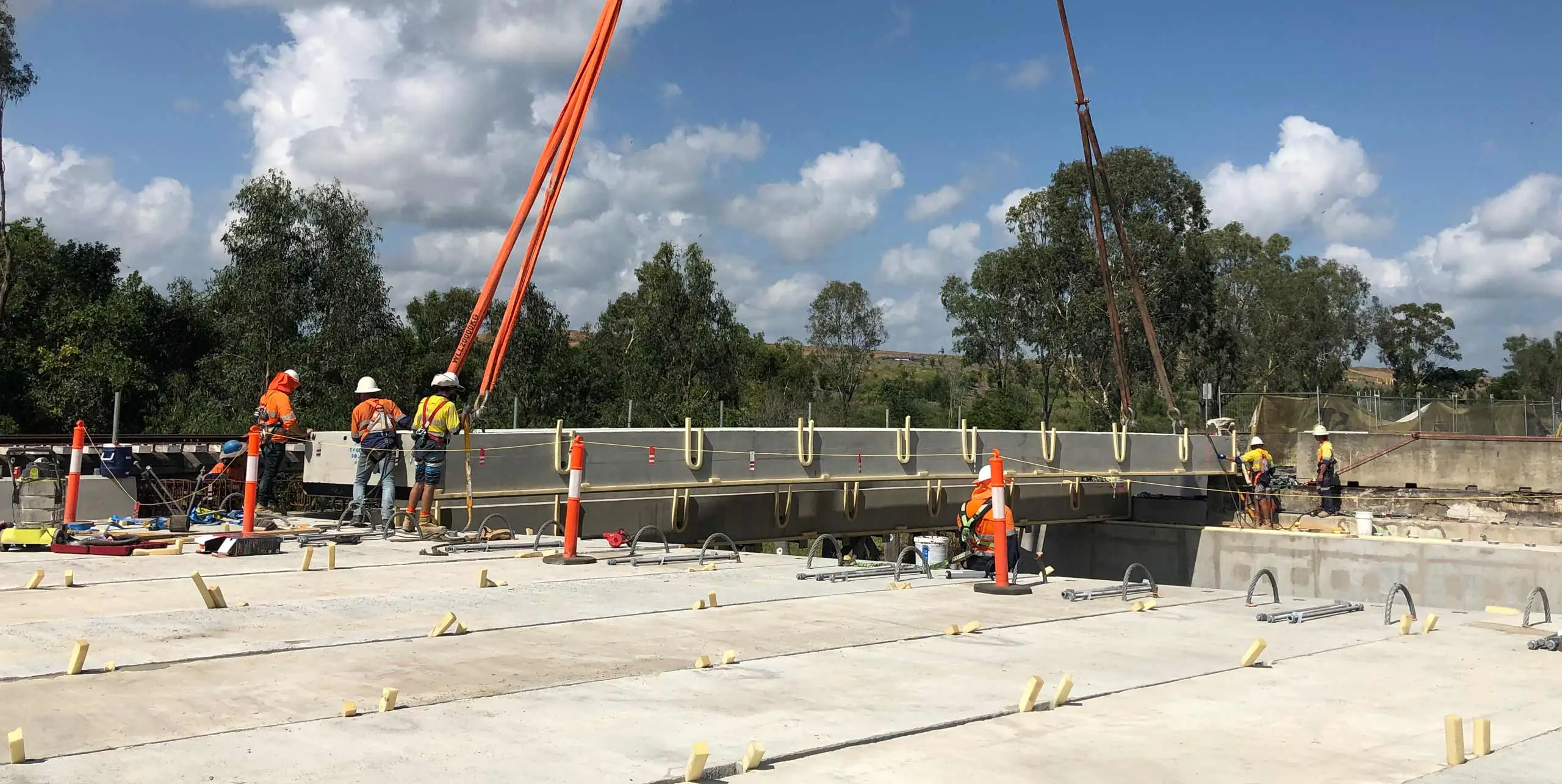
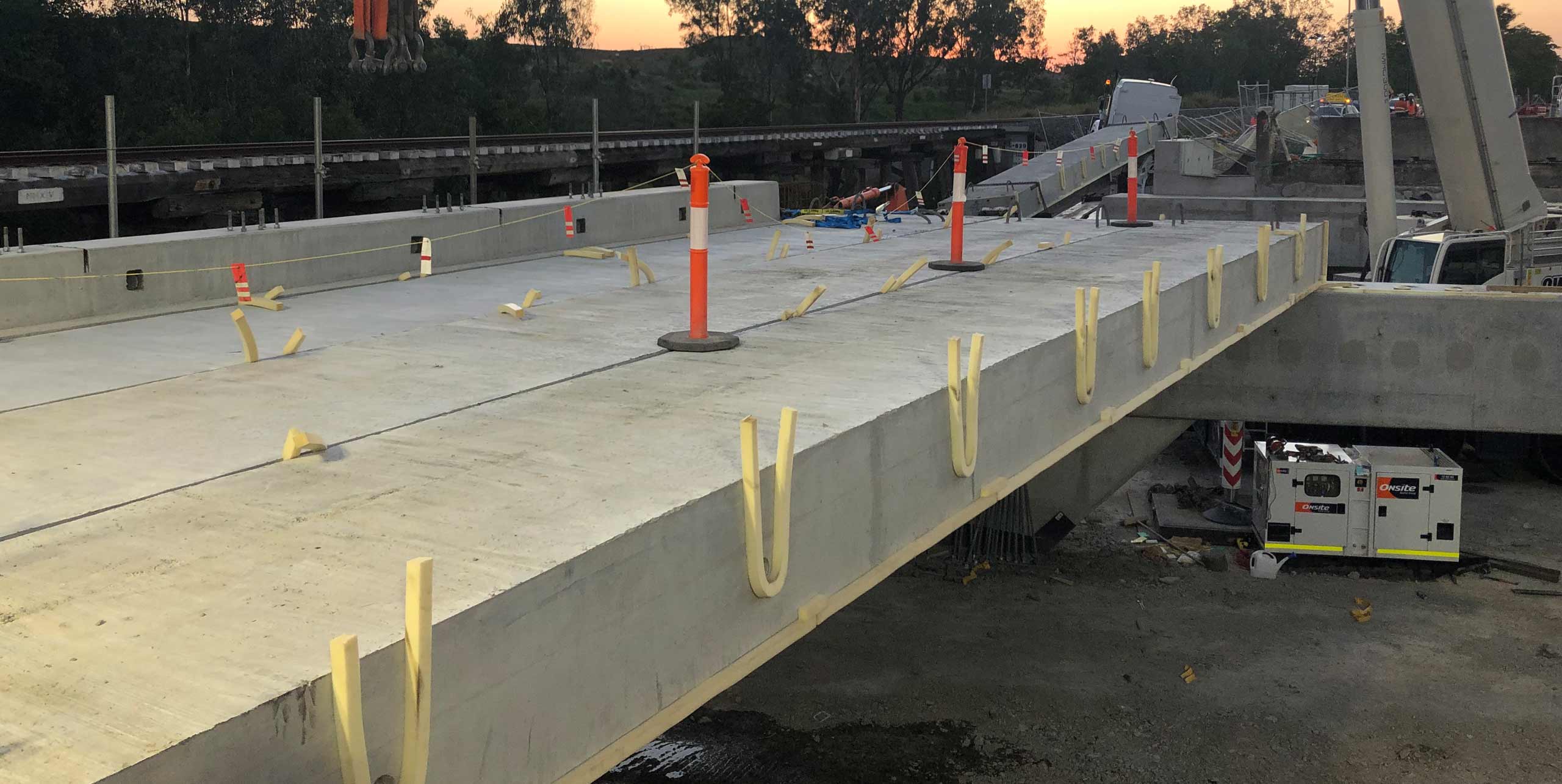
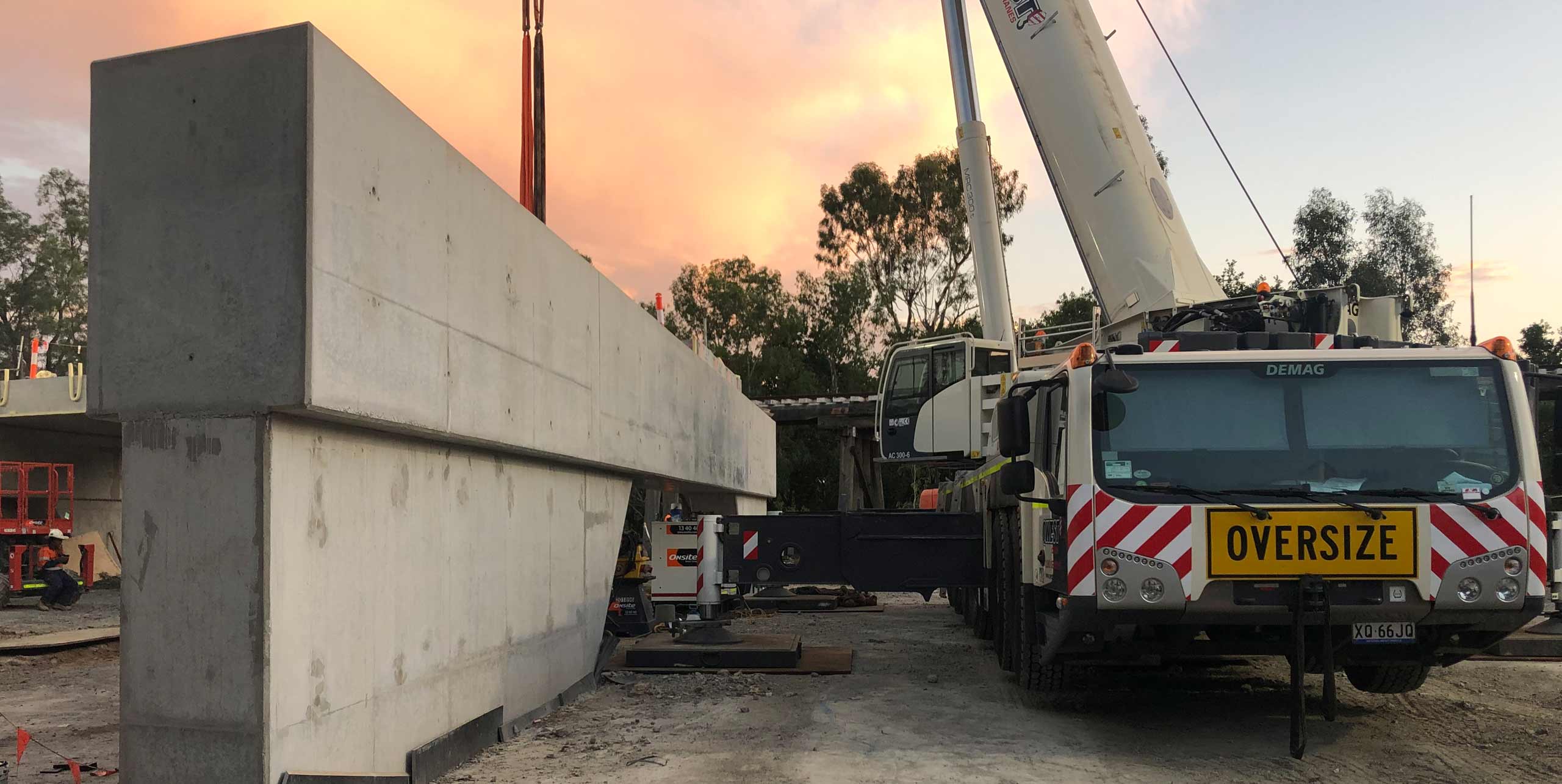
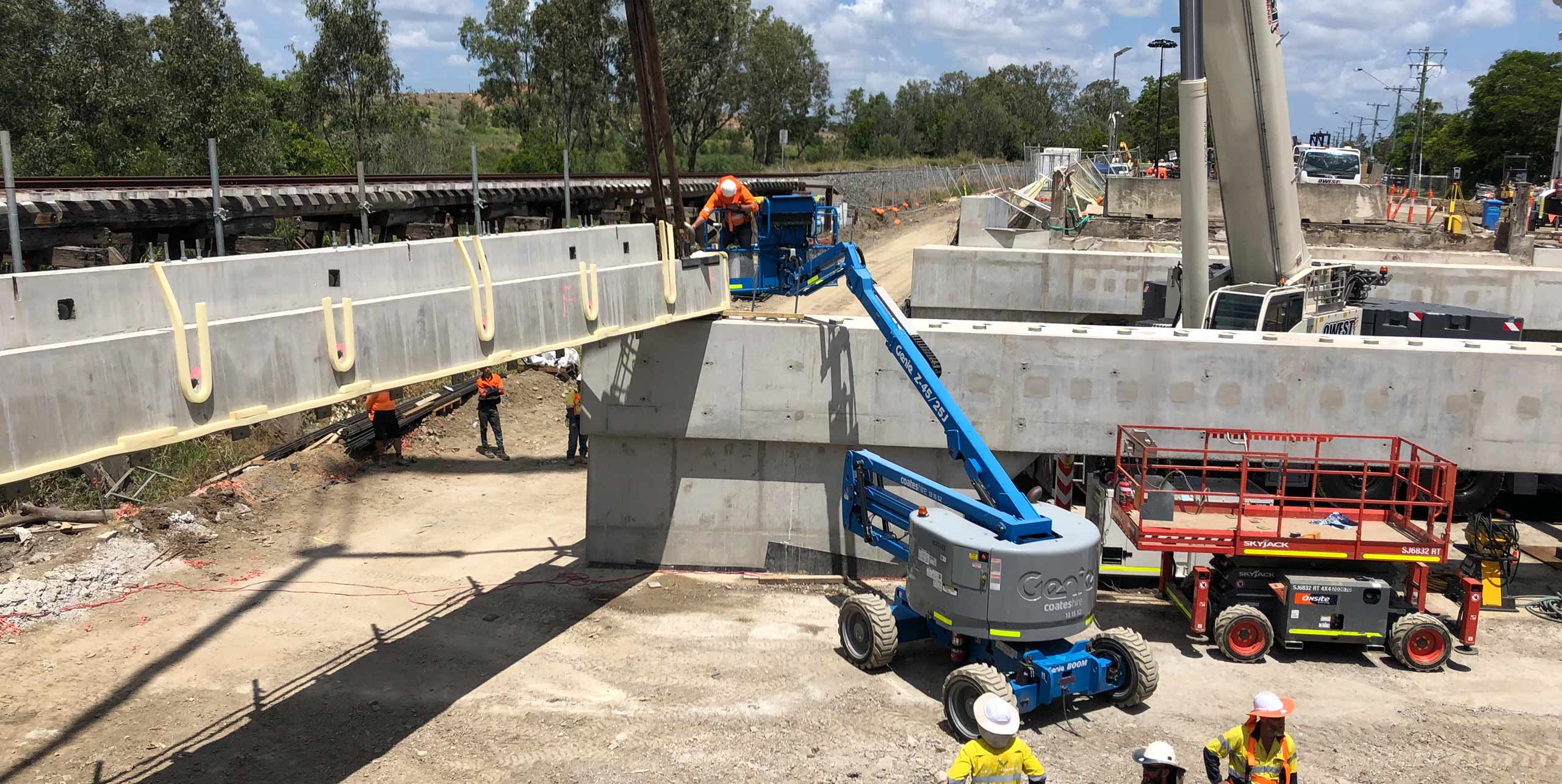
Risk mitigation
As part of the design process, detailed hour-by-hour closure management plans were developed and reviewed by the project’s construction advisors JF Hull. A separate risk register was developed for the key construction activities to be undertaken during the closure window to identify and provide mitigation strategies for any potential risks of time overrun in the program (such as provision of standby equipment etc.). The design was heavily influenced by the need to ensure that these mitigation strategies could be implemented if required, providing assurance that the design intent could be successfully achieved even if significant risks were posed during the construction.
In addition, project specific test methodologies were introduced and specified to ensure unconventional fast-curing material would be correctly supplied, stored, mixed and applied on the structure to ensure the intended strength would be gained within the expected time limits during the road closure activities.
Outcomes
Through pushing technical boundaries to develop and implement innovative solutions, the team were able to successfully deliver a full bridge replacement in 80-hours. The team also achieved:
- Minimum disruption and impact to existing assets within and adjacent to the bridge footprint including third-party services, adjacent Queensland Rail bridge, private property north of the site (Betapoly) and Thozet Road intersection;
- Improved construction safety by reduced in-situ construction in and around waterways and adjacent to live traffic;
- Introduction of latest technology in fast-curing material to minimise construction duration;
- Introduction of an innovative triple-hollow deck bridge system to the industry;
- Introduction of a bespoke concrete mix design to suit project constraints.
Collaborating on a technical first
By challenging standard demolition and construction methodologies, SMEC collaborated with TMR to propose, create and deliver a bridge replacement design that can be delivered without significantly disrupting the supply chain between the two abattoirs in North Rockhampton and the CQLX at Gracemere for an extended period.
The innovative structural solution introduced by SMEC to demolish and replace the bridge over Frenchmans Creek, within an 80-hour road closure, is a first for the TMR Fitzroy District.
This innovation will support the Queensland State Government in achieving their commitments to local industry and support economic growth in the region by minimising disruption to an essential supply route during construction and by providing a long-term access route for Type 1 Road Trains into the future.
Related
insights
 A reliable delivery partner: Progressing essential infrastructure during COVID-19
A reliable delivery partner: Progressing essential infrastructure during COVID-19
India, Bangladesh and other South Asian nations have been battling a resurgence of COVID-19 for the past several months, with strict lockdown measures enforced in many cities.
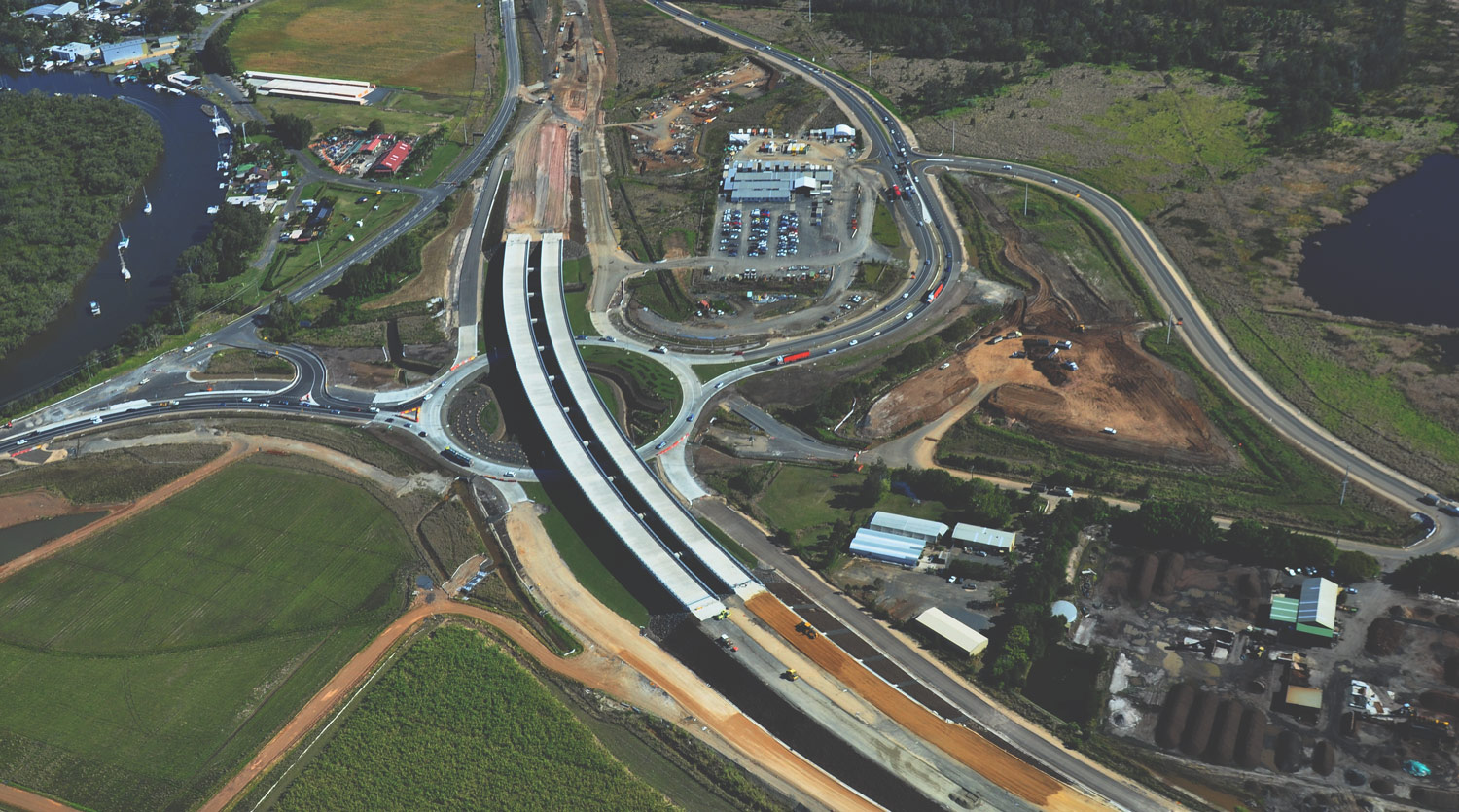 Building more climate-resilient infrastructure on soft soils
Building more climate-resilient infrastructure on soft soils
SMEC’s Dr Richard Kelly, Chief Technical Principal – Geotechnical Engineering, has contributed to industry-leading research and innovation in the field of soft soil engineering.
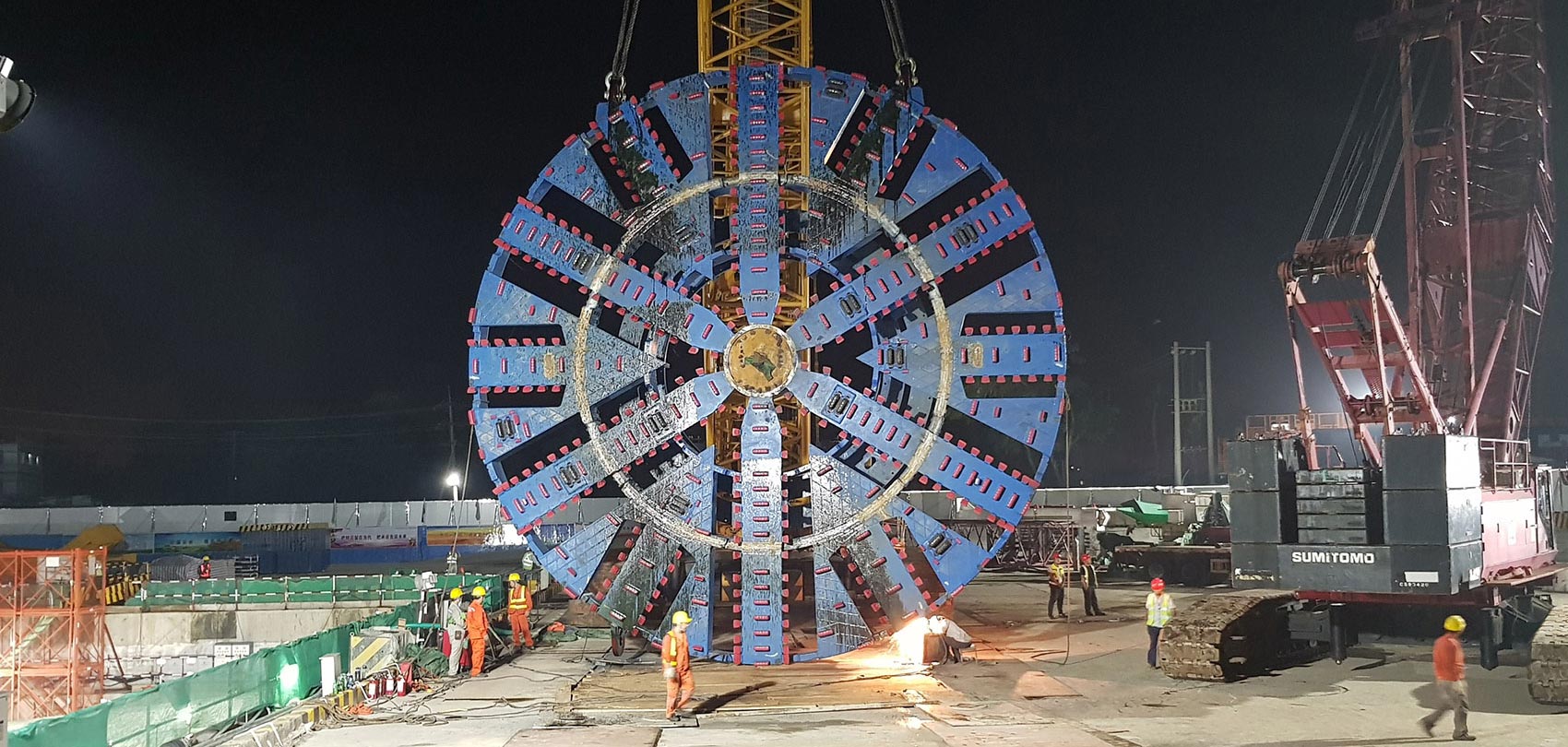 Breaking new ground on Bangladesh’s first underwater tunnel
Breaking new ground on Bangladesh’s first underwater tunnel
Bangladesh is a country of rivers. The Karnaphuli River services the city of Chattogram (formerly called Chittagong), the largest sea port of Bangladesh. With the rapid development of southeast Bangladesh, especially in the regions south of Chattogram, the two existing bridges over the Karnaphuli River are inadequate to accommodate the increase in traffic. With a population of over six million, the heavily congested city of Chattogram is closely surrounded on the east by the Chittagong Hill Tracts and the west by the Bay of Bengal, making an additional bridge type crossing of the Karnaphuli River unviable.





